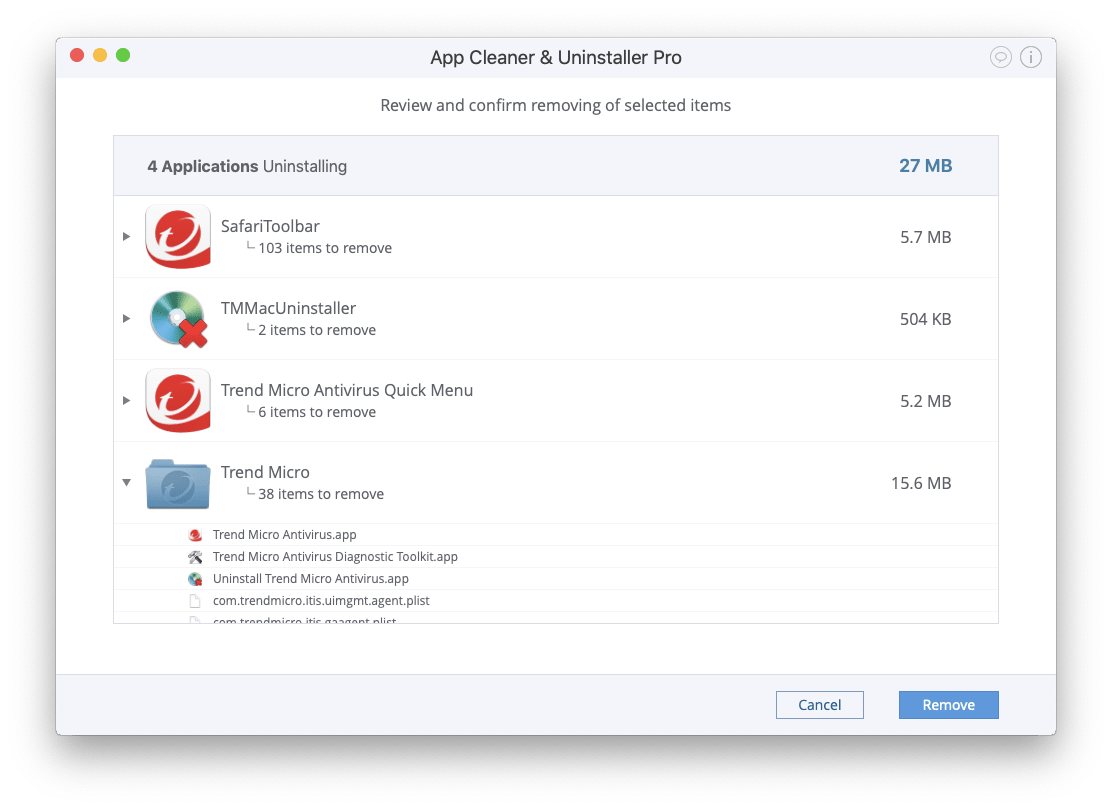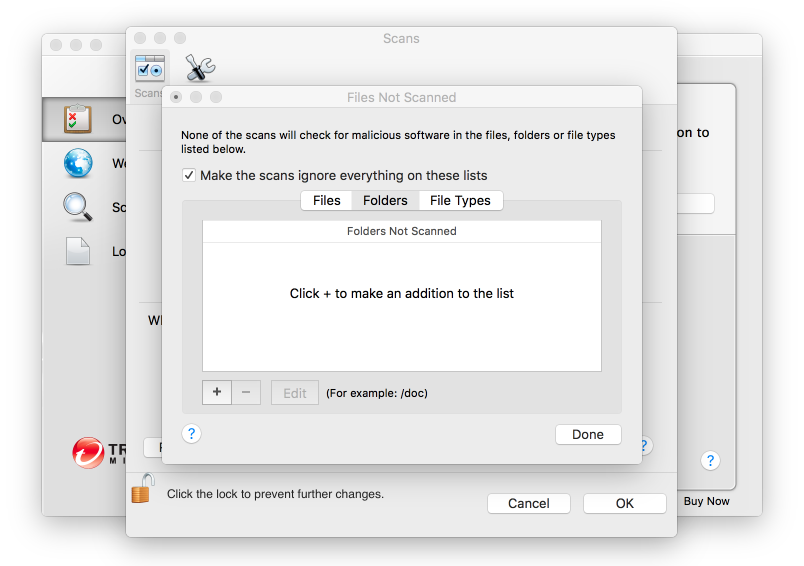
The default installation location is /opt/dsm.Before updating or uninstalling a Deep Security agent or relay on Windows, you must disable agent self-protection. To remove the Deep Security Manager installation directory enter the command:
#Uninstall trend micro manual#
If you selected not to keep the configuration files during the uninstallation, and you later want to reinstall Deep Security Manager, you should perform a manual clean-up before reinstalling. To uninstall via command line, go to the installation folder and enter:ĭuring a silent uninstall via command line, by default, the configuration files are kept so that if you re-install in future, the installer repairs upgrades using existing settings, without asking you to input them again.

#Uninstall trend micro windows#
To initiate the same Windows GUI uninstall procedure from the command line, go to the installation folder and enter:įor a silent uninstall from the command line (without the Windows GUI prompts), add -q.ĭuring a silent uninstall via command line, the configuration files are kept so that if you re-install in future, the installer repairs or upgrades using existing settings, without asking you to input them again. Uninstall Deep Security Manager Uninstall the manager (Windows)įrom the Windows Start Menu, go to Trend Micro > Trend Micro Deep Security Manager Uninstaller, and follow the wizard steps to complete the uninstallation. Double-click Trend Micro Deep Security Notifier, and click Remove.įor a silent uninstall, add /quiet. Swremove ds_agent Uninstall Deep Security Notifierįrom the Windows Control Panel, select Add/Remove Programs. Installp -u ds_agent Uninstall an agent (HP-UX) (Note that uninstall may require a reboot.) Uninstall an agent (Solaris 11) If the platform uses Debian package manager (dpkg), such as Debian and Ubuntu, enter the command: If iptables was enabled prior to installing Deep Security Agent, it will be re-enabled when the agent is uninstalled. To completely remove the agent and any configuration files it created on a platform that uses the Red Hat package manager (rpm), such as CentOS, Amazon Linux, Oracle Linux, SUSE, or CloudLinux, enter the command: Otherwise, use the command line instructions below. If your version of Linux provides a graphical package management tool, you can search for the ds_agent package and use the tool remove the package. Look for the Trend Micro Deep Security Agent and then select Uninstall.įor a silent uninstall, add /quiet.

#Uninstall trend micro password#
In Agent Self Protection, and then either deselect Prevent local end-users from uninstalling, stopping, or otherwise modifying the Agent or enter a password for local override.ĭeep Security Manager by going to the Computers page, right-clicking the computer and selecting Actions > Deactivate. To do this, on the Deep Security Manager, go to Computer editor To open the Computer editor, go to the Computers page and double-click the computer that you want to edit (or select the computer and click Details).

If iptables was enabled prior to the installation of the relay-enabled agent, it will be re-enabled when the relay-enabled agent is uninstalled.īefore updating or uninstalling a Deep Security Agent or Relay on Windows, you must disable agent self-protection. To completely remove the relay and any configuration files it created on a platform that uses the Red Hat package manager (rpm), such as CentOS, Amazon Linux, Oracle Linux, SUSE, or CloudLinux, enter the command: Double-click Trend Micro Deep Security Agent, and click Remove.Īlternatively, you can uninstall from the command line:įor a silent uninstall, add /quiet. In Agent Self Protection, and then either deselect Prevent local end-users from uninstalling, stopping, or otherwise modifying the Agent or enter a password for local override.įrom the Windows Control Panel, select Add/Remove Programs. Before updating or uninstalling a Deep Security agent or relay on Windows, you must disable agent self-protection.


 0 kommentar(er)
0 kommentar(er)
